Are you a Quiet Speculation member?
If not, now is a perfect time to join up! Our powerful tools, breaking-news analysis, and exclusive Discord channel will make sure you stay up to date and ahead of the curve.
An analysist goes to work with the data he's given. With Modern on the competitive backburner for the past few weeks, I've lacked the means to properly dig into the metagame ahead of GP Columbus this weekend. As a result, I am looking a bit further afield into events that I normally wouldn't analyze. Fortunately, the results are consistent enough with previous events that I feel confident using them.
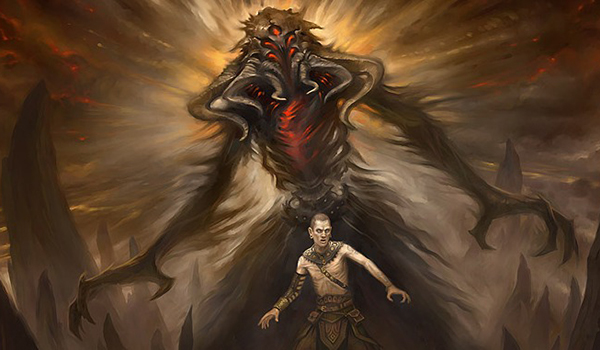
First thing's first: there was another Banned and Restricted Announcement this week. Despite the Standard bloodbath, there were no changes to Modern, as I'd expected. While there are always lots of MTGO data for Wizards to peruse, paper events have been sparse. They will continue to be sparse into next year, so it makes sense to wait and see how things play out. Even if Wizards was inclined to look at Modern, it's not clear that they needed to; despite huge turnouts, Urza decks haven't done that well compared to the overall metagame. The meta may be well on its way to absorbing Urza into the ecosystem, which is suggested by the results from the SCG Invitational.
Invitational Day 2
As always, we'll start with the broadest data and move inward. The Invitational had 488 players with 168 making into Day 2. This is a much smaller starting population than the typical Open or Grand Prix, but on par for Day 2 populations, which helps the data's validity.
| Deck Name | Total # |
|---|---|
| Simic Urza | 24 |
| Amulet Titan | 18 |
| Grixis Death's Shadow | 18 |
| Other | 14 |
| Mono-Green Tron | 12 |
| Burn | 11 |
| Eldrazi Tron | 11 |
| Humans | 6 |
| Devoted Devastation | 5 |
| Four-Color Whirza | 4 |
| Infect | 4 |
| Jund Death's Shadow | 4 |
| Simic Eldrazi | 3 |
| Urza Outcome | 3 |
| UW Control | 2 |
| Crabvine | 2 |
| Four-Color Death's Shadow | 2 |
| Gifts Storm | 2 |
| Jund | 2 |
| Mono-Green Devotion | 2 |
| Mono-Red Prowess | 2 |
For the sake of a smaller table, I lumped all the singleton decks together under "Other". It is interesting, though unsurprising, that it's not the largest category like at most Grand Prix. Since they had to qualify, Invitational players tend to be sharky Spikes and will gravitate toward known decks. This is particularly true when one deck is perceived as the best deck at the moment.
 Just like in Atlanta, Simic Urza (meaning Urza, Lord High Artificer with Oko, Thief of Crowns) was the most popular deck, followed by Amulet Titan. However, this time Titan tied with Grixis Death's Shadow. It makes sense for GDS to be popular in the wake of its win in Atlanta and its winning history. Its performance was further boosted by Simic Urza being the type of deck GDS traditionally preys on. Simic Urza has very few cards that actually win the game, they being primarily the aforementioned Urza and Oko. GDS is packed with hand destruction to rip out all the real cards, leaving only the air, counters for topdecks, and a very rapid clock. They've even worked to speed it up by readopting Temur Battle Rage, which is also great for breaking through Thopters.
Just like in Atlanta, Simic Urza (meaning Urza, Lord High Artificer with Oko, Thief of Crowns) was the most popular deck, followed by Amulet Titan. However, this time Titan tied with Grixis Death's Shadow. It makes sense for GDS to be popular in the wake of its win in Atlanta and its winning history. Its performance was further boosted by Simic Urza being the type of deck GDS traditionally preys on. Simic Urza has very few cards that actually win the game, they being primarily the aforementioned Urza and Oko. GDS is packed with hand destruction to rip out all the real cards, leaving only the air, counters for topdecks, and a very rapid clock. They've even worked to speed it up by readopting Temur Battle Rage, which is also great for breaking through Thopters.
However, a bigger story is the relative lack of Urza in this Day 2. I realize that sounds weird given Simic Urza being the most popular deck, but the overall representation is down because there is a huge drop-off from Simic's 24 pilots to 4-Color Whirza's mere four, marking a huge reversal from Atlanta: there, they were very close together, with additional versions lower down the standings. There are only three Urza variants this time, which is a proportional decrease. Whether this development is a function of Simic's breakout popularity or indicative of a general move away from the other versions is impossible to say at this point.
The Big Asterisk
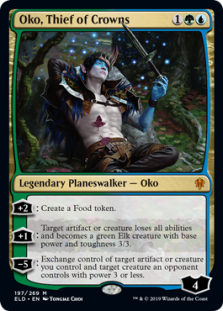 There are two problems with this data. The first is that this is an Invitational. It is therefore a curated data set rather than a random one. Randomness is critical for validity, since it ensures that every member of the population had a chance to be counted. Qualifying required winning a separate tournament, generating a random sample, but from a very small population. The qualifiers were also relatively small and represent smaller areas, which allows outliers and biases to more strongly influence the data.
There are two problems with this data. The first is that this is an Invitational. It is therefore a curated data set rather than a random one. Randomness is critical for validity, since it ensures that every member of the population had a chance to be counted. Qualifying required winning a separate tournament, generating a random sample, but from a very small population. The qualifiers were also relatively small and represent smaller areas, which allows outliers and biases to more strongly influence the data.
Adding further complication, the Invitational is an SCG event. I'm informed that these are very team-orientated, and the metagames prove somewhat inbred as a result. I can't confirm this is true, but the impact of Simic Urza being a team deck in Atlanta was very strongly felt. As a result, I'm inclined to be skeptical of the overall applicability to the metagame, despite the similarities to previous events.
Top 16
While previous events reported a Top 32, the smaller overall size of the tournament led to only the Top 16 being reported.
| Deck Name | Total # |
|---|---|
| Grixis Death's Shadow | 5 |
| Eldrazi Tron | 2 |
| Simic Urza | 2 |
| Humans | 1 |
| Mono-Green Tron | 1 |
| Amulet Titan | 1 |
| CrabVine | 1 |
| Infect | 1 |
| Burn | 1 |
| Devoted Devastation | 1 |
Death's Shadow dominated this Top 16 like it was 2017. That Simic Urza managed to get in two copies also makes sense given the starting population. Despite all the predation, a high starting population ensures that some will evade and thrive.
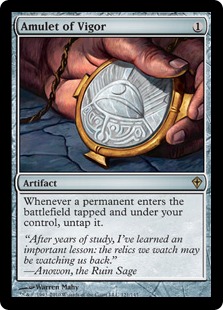 More interesting is the huge falloff in Amulet Titan. Titan's consistently been one of the most popular decks at the SCG events, but that popularity doesn't appear to translate into success. This may be down to GDS' return, as the only card that really matters in Titan is Primeval Titan and again, GDS is very good at dismantling strategies that rely on small numbers of cards.
More interesting is the huge falloff in Amulet Titan. Titan's consistently been one of the most popular decks at the SCG events, but that popularity doesn't appear to translate into success. This may be down to GDS' return, as the only card that really matters in Titan is Primeval Titan and again, GDS is very good at dismantling strategies that rely on small numbers of cards.
However, Big Mana was also a sound strategy against GDS in 2017, which may explain why Eldrazi Tron put as many copies in Top 16 as Simic Urza. E-Tron is great in particular thanks to Chalice of the Void. GDS is primarily made up of one-mana spells, and Urza relies on zero-mana spells, making Chalice very effective in this metagame.
A Bigger Asterisk
Despite this result falling within expectations, I wouldn't read too much into the Top 16. While everything I've already said about the tournament as a whole applies here, that's not the only reason to be skeptical. The Invitational is a multi-format event, split between Pioneer and Modern. Thus, the standings don't accurately reflect Modern successes. I'm inclined to regard them as the decks the most successful individual players played rather than the actual best decks.
7-1 Decks
Therefore, to see which decks were actually the best, we need to know which ones had the best Modern record. Fortunately, Star City is aware of this, and provides access to the 7-1 or better decklists. What follows is not a particularly long list, but it is instructive.
| Deck Name | Total # |
|---|---|
| Simic Urza | 2 |
| 4 Color Death's Shadow | 1 |
| Mono-Red Prowess | 1 |
| Infect | 1 |
| Grixis Death's Shadow | 1 |
| Devoted Devastation | 1 |
| Mono-Green Tron | 1 |
This result reinforces that which the Top 16 suggests. Russell Lee, playing 4-Color Death's Shadow, had one of the better Modern records, but did not appear in the Top 16. Similarly, Invitational winner Chris Barone isn't on this list, having done much better in Pioneer than in Modern.
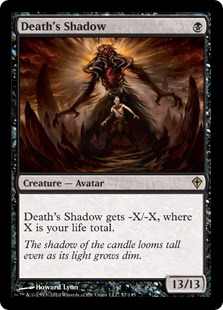 Simic Urza performed proportionately better here than it did in the overall standings. Whether this is down to the starting population or actual metagame power and positioning is a tough call to make, though it is worth mentioning that if Oko slips through the net, he's very good against Death's Shadow.
Simic Urza performed proportionately better here than it did in the overall standings. Whether this is down to the starting population or actual metagame power and positioning is a tough call to make, though it is worth mentioning that if Oko slips through the net, he's very good against Death's Shadow.
On that note, GDS was nothing special here, but Death's Shadow strategies nonetheless tied with Simic Urza. Back in 2017, GDS pushed every other version out with its superior consistency. The introduction of Once Upon a Time has reignited the discussion. For a deck built around velocity and mana efficiency, a potentially free cantrip is incredibly exciting. Traverse the Ulvenwald does a better job finding creatures or lands, but only with delirium. However, from experience, the 4-color Shadow decks have always suffered from being much less forgiving than GDS, so I'm curious whether the potential power of extra colors is actually worthwhile this time.
Reading the Tea Leaves
That players should be prepared for Urza, especially Simic Urza, is a given. This trend toward Urza has been building for some time now and should continue considering its recent visibility.
Beyond that, the picture gets murky. I've only been analyzing SCG events recently, so I can't say with certainty that what I've observed is accurate picture of the entire metagame. Nor can I confirm allegations of metagame insularity or teamthink affecting the metagame, SCG Atlanta notwithstanding. Even within the SCG world, the picture is very complicated. However, everyone else is in the same boat, so conjectures based on the SCG data will at least inform player decisions for the coming Modern season.
Metagame Predictions
Looking past Urza decks, Shadow should be the next deck on everyone's mind. The perception that it's an Urza-killer, which may be correct, is one factor, but I think a stronger one is emotional attachment. GDS was very popular for over a year, and a lot of competitive players own the deck. It went away thanks first to metagame shifts, and then Izzet Phoenix. With the graveyard decks out of the picture and the pressure off, plenty of old adherents may be returning to their old deck anyway. That it may be well positioned is a bonus.
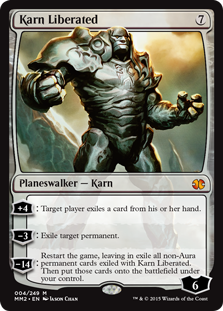 The other big deck is the category of Big Mana. Tron and Amulet Titan have consistently been popular in these analyses since Hogaak was banned. But Eldrazi Tron may be creeping back in now that its old frenemy GDS is back, too. Still, it isn't clear that any of these decks are actually good. Titan and Tron haven't been doing that well despite the numbers they bring to Day 2. Titan came second in Indianapolis, and had okay-but-not-spectacular results in Atlanta. Tron hasn't done anything remarkable other than be popular, which it always is and is likely to always be. Tron just does its Tron thing and sees if you can cope. Eldrazi Tron's only had the Invitational Top 16 result to put it above other options. Thus, I expect Big Mana to be popular, but not necessarily successful.
The other big deck is the category of Big Mana. Tron and Amulet Titan have consistently been popular in these analyses since Hogaak was banned. But Eldrazi Tron may be creeping back in now that its old frenemy GDS is back, too. Still, it isn't clear that any of these decks are actually good. Titan and Tron haven't been doing that well despite the numbers they bring to Day 2. Titan came second in Indianapolis, and had okay-but-not-spectacular results in Atlanta. Tron hasn't done anything remarkable other than be popular, which it always is and is likely to always be. Tron just does its Tron thing and sees if you can cope. Eldrazi Tron's only had the Invitational Top 16 result to put it above other options. Thus, I expect Big Mana to be popular, but not necessarily successful.
As for the rest of the metagame, the other successful decks in the 7-1 data were Gotcha!-style. Infect is the classic example, but Mono-Red Prowess is in the same boat, and I will argue that so is Devoted Druid combo. They're taking advantage of a lull in Lightning Bolts and cheap interaction in general caused by the Big Mana and Urza upswing.
What I'd Play
For those who don't want to play the presumptive best decks, the choice is hard. You can never be strong everywhere, and there are factors pulling in multiple directions. I think that straight Jund would be my choice. It's generally weak to Big Mana, but the other metagame forces make me think that may not be as much of a problem.
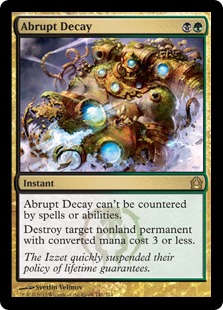 Jund has solid matchups against Urza and Death's Shadow thanks to removal density. In particular, Jund has the same amount of discard as GDS, but a wider array of removal spells to deal with everything the two decks can throw at it. It also has access to excellent sideboard cards against both decks: Abrupt Decay and Plague Engineer are notable standouts.
Jund has solid matchups against Urza and Death's Shadow thanks to removal density. In particular, Jund has the same amount of discard as GDS, but a wider array of removal spells to deal with everything the two decks can throw at it. It also has access to excellent sideboard cards against both decks: Abrupt Decay and Plague Engineer are notable standouts.
Big Mana isn't unwinnable, but it is a struggle. However, going by the 7-1 data, Infect is coming back to prey on them, which will keep those bad matchups down. Such cheap creature decks are good matchups for Jund, especially with Wrenn and Six in the mix, which should be a net positive.
On the Horizon
The Modern GPs around the corner should finally provide some truly random data to work with, yielding a more accurate picture of the metagame. Hopefully, that picture sees Modern adapting to Urza with no intervention necessary. However, the guy at my LGS who always seems to pick up decks that get banned just finished building Simic Urza, so I'm feeling skeptical.



